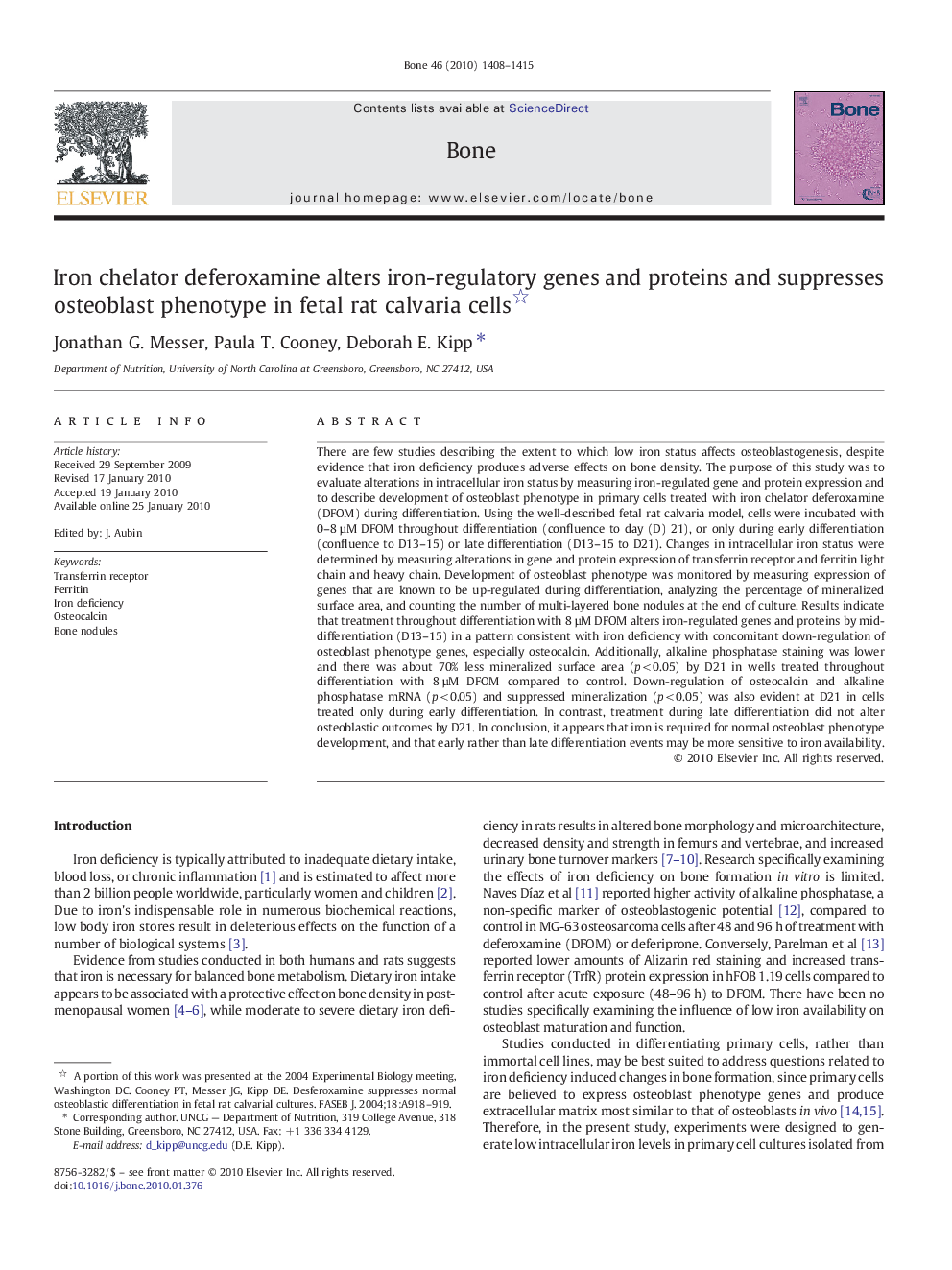| Article ID | Journal | Published Year | Pages | File Type |
|---|---|---|---|---|
| 5892262 | Bone | 2010 | 8 Pages |
There are few studies describing the extent to which low iron status affects osteoblastogenesis, despite evidence that iron deficiency produces adverse effects on bone density. The purpose of this study was to evaluate alterations in intracellular iron status by measuring iron-regulated gene and protein expression and to describe development of osteoblast phenotype in primary cells treated with iron chelator deferoxamine (DFOM) during differentiation. Using the well-described fetal rat calvaria model, cells were incubated with 0-8 µM DFOM throughout differentiation (confluence to day (D) 21), or only during early differentiation (confluence to D13-15) or late differentiation (D13-15 to D21). Changes in intracellular iron status were determined by measuring alterations in gene and protein expression of transferrin receptor and ferritin light chain and heavy chain. Development of osteoblast phenotype was monitored by measuring expression of genes that are known to be up-regulated during differentiation, analyzing the percentage of mineralized surface area, and counting the number of multi-layered bone nodules at the end of culture. Results indicate that treatment throughout differentiation with 8 µM DFOM alters iron-regulated genes and proteins by mid-differentiation (D13-15) in a pattern consistent with iron deficiency with concomitant down-regulation of osteoblast phenotype genes, especially osteocalcin. Additionally, alkaline phosphatase staining was lower and there was about 70% less mineralized surface area (p < 0.05) by D21 in wells treated throughout differentiation with 8 µM DFOM compared to control. Down-regulation of osteocalcin and alkaline phosphatase mRNA (p < 0.05) and suppressed mineralization (p < 0.05) was also evident at D21 in cells treated only during early differentiation. In contrast, treatment during late differentiation did not alter osteoblastic outcomes by D21. In conclusion, it appears that iron is required for normal osteoblast phenotype development, and that early rather than late differentiation events may be more sensitive to iron availability.
